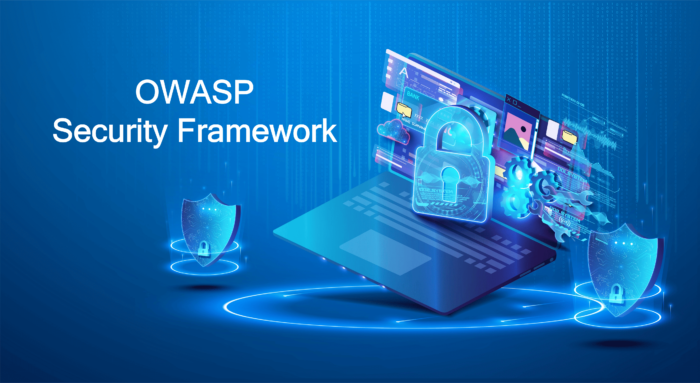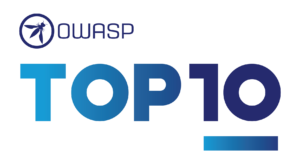How Do I Use the OWASP Framework to Create Secure Software Development?
The Open Web Application Security Project (OWASP) is an online community that works to improve the security of software. The OWASP framework, used as guidance, can be effectively utilized for secure software development (DevOps), providing real-time insights that allow developers to map the risk of actual threats and comply with security mandates like the US’s Cybersecurity Executive Order.
Much like a set of training wheels, the OWASP framework is there to help developers approach software development with security in mind. It’s easy to see why. Software applications are big money makers since they are the drivers of the global digital transformation.
According to Statista, organizations will spend up to $672 billion (USD) on enterprise software in 2022 – up 11% from 2021. With year-on-year growth frequently exceeding 10%, the enterprise software market is the fastest-growing segment in the overarching IT industry.
Unfortunately, these software applications are also lucrative for hackers, not just because of the sheer volume of money flowing through them but also because of the connected devices they power. As a result, hackers constantly use new and existing tactics to access, steal, change and delete personal and business data. According to this report, data breaches grew by 69% in 2021, while 73% of security incidents flagged by Alert Logic were software breaches.
It is clear that software vulnerabilities remain one of the primary exposures of IT to threats – and are among the most challenging problems for organizations to tackle successfully at multiple levels. This is why application security has become an essential consideration for businesses globally since their business survival is often hinged on how well they protect users and their data.
Fortunately, technology is evolving along with the threat landscape, and organizations are surmounting the problem by fostering application security as a matter of design. This ensures that any exploitable vulnerabilities are caught and removed before the product is released. Software firms like i3solutions are front and center of this fight, building software solutions that execute the burden of security through their entire lifecycle, from development to operation.
The Critical Interaction of Software Development (DevOps) and Security
As organizations use new technologies to transform their operations, the success of their digital transformation is primarily determined by how quickly, reliably, efficiently, and securely they develop software.
To meet that standard, organizations use a methodology that integrates software development and operations teams to collaboratively plan, build, and deploy software across an end-to-end unified system. DevOps, as it is called, expands on the Agile approach to software development, and allows organizations to build, market, and ship software applications in a faster and more iterative manner.
The DevOps methodology works on four fundamental principles that center on the best aspects of software development today, namely;
- Automation of the software development lifecycle,
- Holistic system thinking,
- Removal of silos through collaboration and communication,
- Hyperfocus on user needs with rapid useful feedback loops,
Today, the results obtained from using these principles to innovate have seen DevOps move from a niche approach in application development to the foremost strategy for organizations looking to drive business results.
The challenge, of course, is that commercial pressure to shorten software release cycles incentivizes developers to be less-than-thorough or completely ignore secure development and vulnerability mitigation. But, thanks to high-profile software breaches, the landscape is increasingly deferential to standards and frameworks that guide the development of secure-by-design software.
What is OWASP & Why is it so important?
OWASP is the acronym for the “Open Web Application Security Project”; a non-profit entity with international recognition, acting with a focus on collaboration to strengthen software security worldwide.
The group comprises hundreds of web security specialists worldwide who network, build and exchange their know-how of best practices, vulnerabilities, threats, and countermeasures in web application development.
OWASP’s Top 10 is a renowned body of work by the group, comprising listicles compiled by OWASP from community surveys, contributed data, and vulnerability databases. The most famous of these lists is the Top 10 Web Application Security Risks, a ranked list of 10 commonly exploited vulnerabilities in web applications. Some other projects by the group are just or nearly as prominent (Juice Shop, WebGoat, Cheat Sheet Series, etc.)
OWASP’s Top 10 is broadly used as a reference point by organizations and is perhaps one of the industry’s most-ubiquitous ranking and remediation resources. Companies and project teams utilize this list to benchmark vulnerabilities needing remediation first. The list’s latest iteration was published in 2021 and lists, in the order of their severity, the most common vulnerabilities as follows:
- Broken Access Control: Describes a situation where attackers gain control of user or admin accounts and where regular users gain unintended privileged functions.
- Cryptographic Failures: Covers the protection of (and failure to protect) data in transit and at rest – including passwords, credit card numbers, health records, and other personal or sensitive information.
- Injection: When untrusted data is interpreted and injected into a query such as SQL, OS, NoSQL, or LDAP, resulting in the execution of unintended commands or unauthorized access to information.
- Insecure Design: Covers weaknesses originating from missing or ineffective security controls. It also covers situations where a secure design exists but is rendered exploitable due to implementation flaws.
- Security Misconfiguration: Includes the use of insecure defaults, incomplete configuration, and verbose error messages containing sensitive info. All operating systems, applications, libraries, and frameworks should be securely configured and patched.
- Vulnerable and Outdated Components: Vulnerabilities resulting from unsupported or obsolete software.
- Identification and Authentication Failures: Formerly cataloged as “Broke authentication,” includes security problems related to user identities and authentication.
- Software and Data Integrity Failures: Involves code and infrastructure vulnerable to integrity violations. Covers unvalidated software updates and CI/CD pipeline changes.
- Security Logging and Monitoring Failures: Covers weaknesses in an application’s ability to detect security risks and respond to them.
- Sever-side Request Forgery: Vulnerabilities arise when web applications pull data from remote resources based on user-specified URLs without validation.
OWASP’s list is a reference and guidance tool that comprises appropriate preventative techniques and remediative tasks at various phases of the software development life cycle (SDLC). In essence, it’s a body of work that guides and teaches developers to approach software development with security in mind.
Despite being community-driven, auditors tend to see an organization’s failure to address the OWASP Top 10 as a sign that it may not be up to standard regarding compliance. Thus, it is usually a positive reflection of an organization’s valuing of industry best practices where they employ the Top 10 in its software development life cycle (SDLC).
i3solutions is in the business of secure innovation
At i3solutions, we transform your digital product by adopting innovative, safe, and seamless design, development, testing, and deployment methods. Our expert software development and consulting services ensure your solution is built quickly and with the highest quality, while focusing on security throughout the lifecycle of the project. We will help you find the right solution for your business and build software that matches your vision. Contact us today to discuss how we can help you with your security needs.
Leave a Comment



